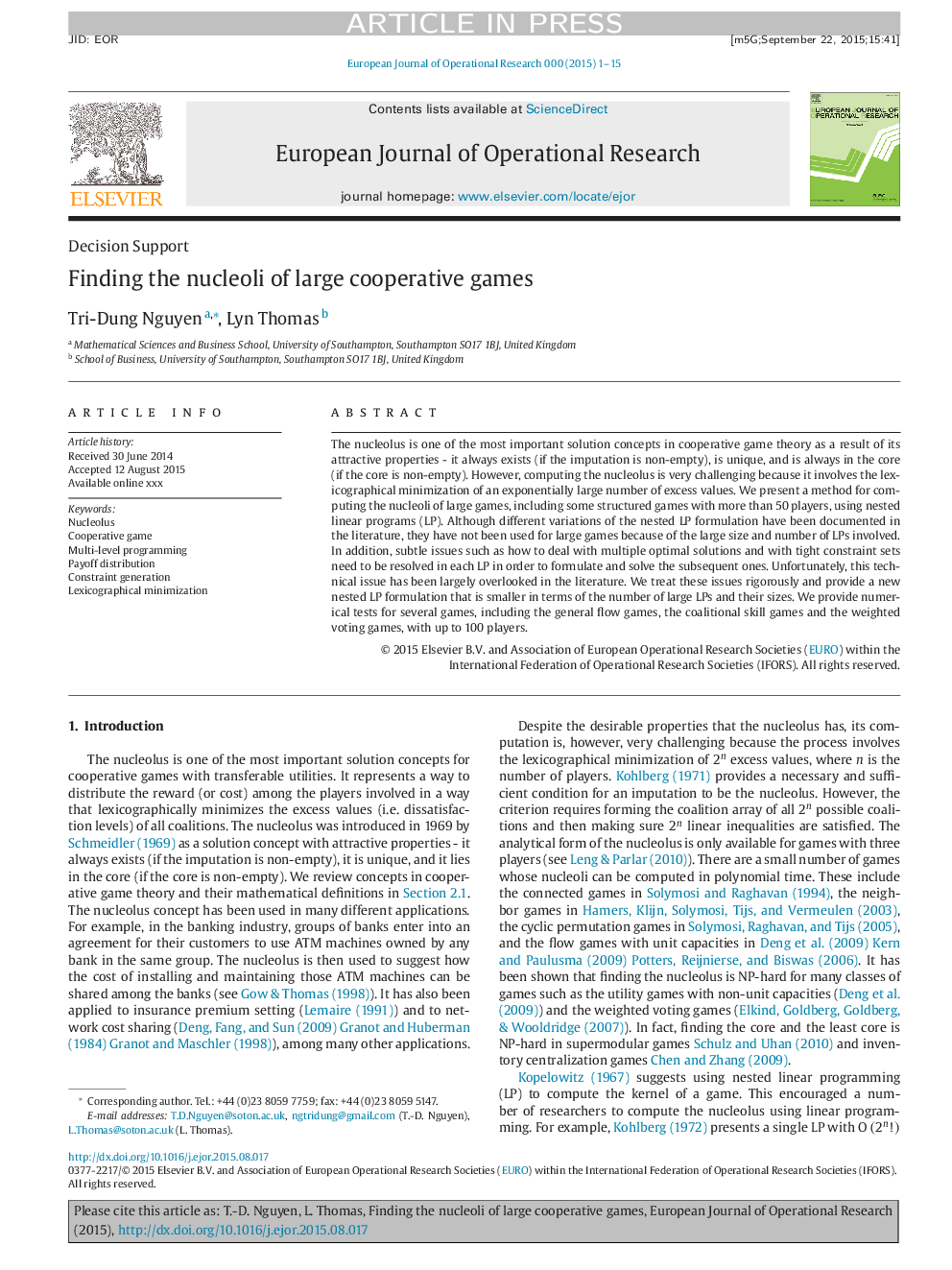| Article ID | Journal | Published Year | Pages | File Type |
|---|---|---|---|---|
| 6896210 | European Journal of Operational Research | 2016 | 15 Pages |
Abstract
The nucleolus is one of the most important solution concepts in cooperative game theory as a result of its attractive properties - it always exists (if the imputation is non-empty), is unique, and is always in the core (if the core is non-empty). However, computing the nucleolus is very challenging because it involves the lexicographical minimization of an exponentially large number of excess values. We present a method for computing the nucleoli of large games, including some structured games with more than 50 players, using nested linear programs (LP). Although different variations of the nested LP formulation have been documented in the literature, they have not been used for large games because of the large size and number of LPs involved. In addition, subtle issues such as how to deal with multiple optimal solutions and with tight constraint sets need to be resolved in each LP in order to formulate and solve the subsequent ones. Unfortunately, this technical issue has been largely overlooked in the literature. We treat these issues rigorously and provide a new nested LP formulation that is smaller in terms of the number of large LPs and their sizes. We provide numerical tests for several games, including the general flow games, the coalitional skill games and the weighted voting games, with up to 100 players.
Related Topics
Physical Sciences and Engineering
Computer Science
Computer Science (General)
Authors
Tri-Dung Nguyen, Lyn Thomas,
